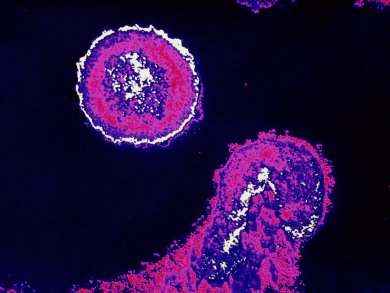The human body responds to a vaccine or virus in two ways: by producing T-cells, which attack infected cells, and by producing B-cells, which secrete antibodies to target the viruses. Synthetic vaccines generally have a lower T-cell response than live vaccines but are safer overall.
Encasing synthetic vaccines in liposomes could help promote T-cell responses due to the virus-like packaging. Darrell Irvine and co-workers, Massachusetts Institute of Technology, USA, have developed a more stable way of assembling liposome nanoparticles. They have crosslinked the headgroups of adjacent lipid bilayers within multilamellar nanoparticles. The interbilayer-crosslinked nanoparticles encapsulated protein antigens in the core. These could be released in the presence of endolysosomal lipases.
The nanoparticles exhibited good stability and provoked a T-cell response comparable to live vaccines. This makes them a potential delivery system for vaccines against diseases that require a high T-cell response, such as HIV.
- Interbilayer-crosslinked multilamellar vesicles as synthetic vaccines for potent humoral and cellular immune responses
J. J. Moon, H. Suh, A. Bershteyn, M. T. Stephan, H. Liu et al.,
Nat. Mater. 2011, 10, 243-251.
DOI: 10.1038/nmat2960



